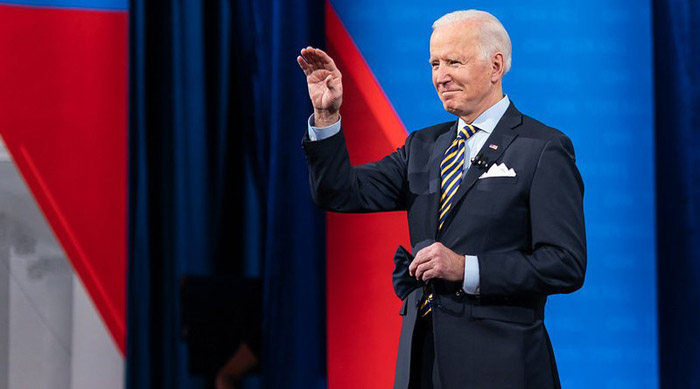
Biden’s race against time to build on ‘red-hot’ first 100 days
Andrew Hammond
Franklin Roosevelt’s presidency is the historic benchmark for judging the first 100 days of any new White House incumbent. While Joe Biden will not surpass the achievements of the legendary proponent of the New Deal, his presidency has seen one of the most productive first three months of the modern era — and the pace could yet quicken.
There are at least three key reasons why Biden has pushed the envelope in his first 100 days. Firstly, at 78 years of age, he knows his time in office could be limited. Indeed, he might be the first president since Lyndon Johnson in the 1960s to ultimately choose not to run for re-election.
Secondly, there may only be a narrow window of opportunity to secure his domestic agenda. This is because Democrats could lose a significant number of seats in Congress in next year’s midterm elections, after which it is possible Biden could face Republican majorities in both the Senate and the House of Representatives.
Thirdly, like Roosevelt in the Great Depression era, Biden’s presidency has so far been shaped by a cataclysmic event: The coronavirus pandemic. This has provided the context for a potentially transformational period of politics, exemplified by his $1.9 trillion coronavirus stimulus bill, which is part of his overall economic recovery package that could prove to be the largest mobilization of public investment since the Second World War.
While that $1.9 trillion legislation achievement is significant, there might be much more to come. Take the example of Biden’s plan to invest $2 trillion in clean-energy infrastructure by 2025, which — with its intent to cut carbon emissions from the generation of electrical power to zero in 15 years — is part of a more muscular US climate policy.
This clean-energy act, which is currently being considered by Congress, will help create millions of new jobs by requiring the country to produce 100 percent clean electricity by 2035. The plan envisages the construction of 1.5 million new energy-efficient homes and public housing units, while also bolstering the production of zero-emission electric vehicles.
However, as “red-hot” as Biden’s first three months have been, there are serious question marks over whether he can now use this momentum to ensure a successful presidency. Roosevelt was able to convert his strong first 100 days into one of the most successful administrations in US history, but this is by no means guaranteed for the current White House incumbent.
Part of the reason for this is the partisan balance in Congress. In 1933, during Roosevelt’s first three months in power, he leveraged significant Democratic majorities in the House (313 to 117) and the Senate (58-37). Today, Democrats have only a single-figure advantage in the House and the Senate is split 50-50, with Biden relying on Vice President Kamala Harris’ casting vote.
Moreover, whereas Roosevelt enjoyed Democratic majorities in both chambers throughout his presidency, the Republicans could win back control of Congress as early as next year’s midterm elections. In the House, there have been only three midterm elections since 1900 — including 1934, when Roosevelt was in power — in which the incumbent’s party did not lose seats. Moreover, in the postwar era, there has been an average net loss of 26 House seats for the sitting president’s party.
The delicate partisan balance in Congress in 2021 is one reason that Biden is relying so heavily on executive orders. A good example here is his important decision to rejoin the 2015 Paris climate change treaty, which he took via executive action as there would not have been enough votes in Congress to get this move through.
There are serious question marks over whether he can use this momentum to ensure a successful presidency.
Beyond the issue of legislative achievement, perhaps the key domestic issue Biden is likely to be judged on will be whether his post-pandemic governing agenda can bring the country together, rather than drive it further apart. The schisms in the country are not just political (between Democrats and Republicans) following Donald Trump’s controversial presidency and his refusal to concede the election. The US has also been in wider social and economic ferment in recent years. Key developments include the killing of George Floyd and the Black Lives Matter movement; the increased prominence of white supremacist movements; and dialogues on equality and sexual violence following the #MeToo revelations.
This is why, after the rancor of recent years, Biden would be wise to continue to encourage reconciliation. In the tumult of the US today, this theme of national renewal could be very powerful if he, like Roosevelt and other successful presidents, can command popular understanding and help heal frayed relations to move the country closer toward realizing one of its longstanding mottos: “E pluribus unum” (out of many, one).
The writer is an Associate at LSE IDEAS at the London School of Economics.
